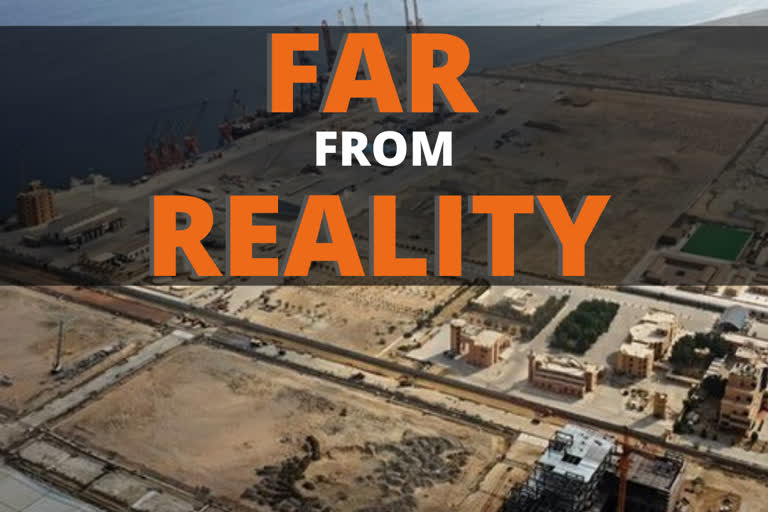Hong Kong: Almost seven years ago, Chinese President Xi Jinping had shared the planning of a massive China Pakistan Economic Corridor Projects (CPEC) linking its landlocked western region of Xinjiang to the Arabian Sea in a bid to venture into the West. But, even today, the vision seems far from reality.
Plans originally called for a seaport, roads, railways, pipelines, dozens of factories and the largest airport in Pakistan. In Gwadar, a remote scratch of land on Pakistan's southwest coast a new airport was supposed to have been completed with Beijing's funding more than three years ago. But the area remains fenced-off with scrubs and dun-coloured sand. Specks of mica in the dirt are the only things that glitter, South China Morning Post reported after citing the Chinese government's data.
The factories have yet to materialise on a stretch of beach along the bay south of the airport. A Pakistan Navy frigate is the only ship docked there and there's no sign of the sole scheduled weekly cargo run from Karachi.
Less than one-third of announced CPEC projects have been completed, totaling about USD19 billion, according to government statements. Pakistan bears much of the blame.
It has repeatedly missed construction targets as it ran out of money; it got a USD 6 billion bailout from the International Monetary Fund last year, the country's 13th since the late 1980s.
Read Also: Israeli PM vows to press forth even after election shortfall
Besides, two successive prime ministers also have been jailed on corruption charges. And the Baloch Liberation Army's desire for a separate homeland in Balochistan province where Gwadar is located has made life there uneasy. In May, militants stormed the city's only five-star Pearl Continental hotel and killed five people.
But the delay in project developments in Gwadar points to larger problems. China is scaling back its ambitions, not just in Pakistan but in many countries around the world including Sri Lanka, Malaysia and Kenya.
Its economic growth has slowed to the lowest rate in three decades, inflation is rising and the country has been feeling the effects of a trade war with the US. The picture gets even dire as the coronavirus outbreak that originated in Wuhan-- the capital of the central province of Hubei-- threatens to cause further hindrance.
"The biggest constraint for China now is its economy," says Jonathan Hillman, a senior fellow at the Center for Strategic and International Studies in Washington.
Governments in the West have shared concerns that the Belt and Road Initiative, of which CPEC is a part, is helping China develop what's known as a string of pearls - ports that can be used by its navy, from the South China Sea across the Arabian Sea and on to Africa.
Nadege Rolland, a senior fellow at the Washington-based National Bureau of Asian Research, said that China's ultimate objective is not to build connectivity but to increase Beijing's political and strategic influence.
This means that even if belt and road spending ends up being a third of what was originally forecast, China may still have got its money's worth.
Read Also: Prisoner swap can't be precondition for talks with Taliban, says Ghani
(With inputs from ANI)



